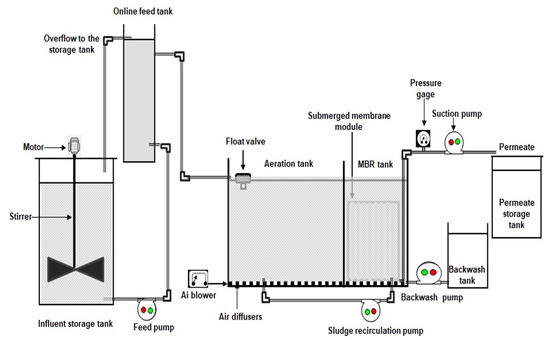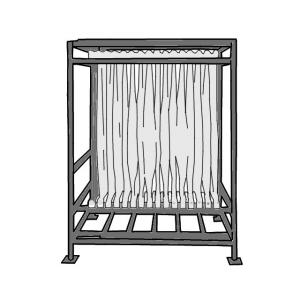Membrane Bioreactors Described: Effective Solutions for Tidy Water
Membrane layer bioreactors (MBRs) have arised as a sophisticated solution for resolving journalism difficulties of wastewater treatment. By incorporating organic procedures with advanced membrane layer filtration, MBRs not just improve the quality of cured water but additionally lower the spatial demands of treatment facilities. As ecological concerns escalate, the role of MBR modern technology in promoting sustainable water monitoring comes to be significantly considerable. The intricacies of their operation, advantages, and possible applications warrant a closer assessment to completely comprehend their effect on the future of water treatment.

What Are Membrane Bioreactors?
Membrane layer bioreactors (MBRs) are advanced wastewater treatment systems that incorporate organic destruction processes with membrane layer filtration innovation. This combination enables the reliable elimination of pollutants from water, making MBRs a preferred selection in various applications, consisting of metropolitan wastewater treatment and industrial effluent monitoring.

One of the essential advantages of MBRs is their capability to create top quality effluent, usually appropriate for reuse in irrigation or industrial processes. Additionally, MBRs require a smaller sized impact compared to conventional treatment systems, making them perfect for city setups where area may be restricted.
Furthermore, MBRs can properly handle varying influent loads and are less susceptible to the impacts of harmful shocks. These characteristics contribute to their expanding appeal as a sustainable service for addressing the increasing need for tidy water while lessening environmental impacts.
Just How Membrane Bioreactors Job
While the procedure of membrane layer bioreactors (MBRs) might seem facility, it fundamentally revolves around the harmony in between biological procedures and membrane purification. MBRs incorporate a biological therapy process, commonly triggered sludge, with a membrane separation device to deal with wastewater successfully.
In an MBR system, wastewater is very first introduced right into a bioreactor where microorganisms deteriorate natural issue and other impurities. The organic task reduces the focus of contaminants while promoting the growth of biomass. Following this organic therapy, the mixed alcohol undergoes membrane purification, which can be microfiltration or ultrafiltration, depending upon the desired effluent quality.
The membranes act as a physical obstacle, allowing water and tiny solutes to pass while retaining put on hold solids and bigger particles. This allows the system to maintain a high concentration of biomass within the reactor, boosting the treatment effectiveness.
In addition, the constant separation of cured water from the biomass promotes a small style and lessens the footprint of the treatment center. Generally, the mix of organic degradation and membrane layer purification in MBRs results in effective and trustworthy wastewater treatment, making sure premium effluent suitable for various applications.
Benefits of MBR Innovation
Among the vital benefits of membrane layer bioreactor (MBR) modern technology is its capability to create high-quality effluent with a substantially minimized impact compared to standard wastewater therapy methods. MBR systems successfully combine biological treatment and membrane layer filtration, resulting in exceptional elimination of pollutants, consisting of put on hold solids, pathogens, and natural matter. This capacity brings about effluent that navigate here usually satisfies or exceeds rigid governing criteria for reuse and discharge.
Additionally, MBR innovation enables greater biomass concentrations, which boosts the treatment effectiveness and reduces the needed reactor quantity. This portable layout is specifically helpful in metropolitan areas where area is restricted. The functional flexibility of MBR systems additionally implies they can adjust to differing influent high qualities and circulation rates, making them appropriate for a vast array of applications.
In addition, the reduced sludge manufacturing related to MBR procedures adds to reduce operational and upkeep prices. The membranes work as a physical barrier, reducing the danger of blocking and enabling longer operational durations between cleansing. In general, the benefits of MBR innovation make it an appealing option for lasting wastewater therapy, addressing both environmental issues and the need for efficient resource administration.
Applications of Membrane Bioreactors
With their convenience and efficiency, membrane layer bioreactors (MBRs) discover applications across numerous sectors, consisting of local wastewater therapy, commercial processes, and also water reclamation. In community settings, MBRs give a compact option for dealing with wastewater, efficiently removing contaminants while at the same time creating premium effluent that meets rigid regulative requirements. This makes them specifically appropriate for locations with restricted space.
In industrial applications, MBR innovation is utilized for dealing with procedure water, specifically in markets such as food and beverage, drugs, and petrochemicals. These industries gain from MBRs' ability to manage high organic lots and their efficiency in recouping valuable sources from wastewater, wikipedia reference such as nutrients and water.
Additionally, MBRs play an essential duty in water recovery efforts, allowing the reuse of dealt with wastewater for irrigation, industrial procedures, and even as safe and clean water after further treatment (Membrane Bioreactor). Their effectiveness in removing virus and toxins makes them a reliable choice for ensuring water quality in various reuse applications
Future of Water Therapy Solutions
The future of water treatment options is positioned for transformative innovations driven by technological development and enhancing environmental recognition. As international water deficiency comes to be a pressing issue, new approaches, including membrane bioreactor (MBR) systems, are set to play an essential role in boosting the performance and sustainability of water therapy procedures.
Arising innovations such as expert system and machine understanding are anticipated to enhance therapy procedures, enabling for real-time tracking and anticipating upkeep. This will certainly boost the total reliability and effectiveness of water treatment centers. Improvements in membrane layer materials, such as graphene and nanofiltration, assure to raise permeation rates and minimize fouling, leading to reduced power consumption and functional prices.
Additionally, the assimilation of renewable power sources into water therapy plants will certainly add to greener techniques. The round economy version will also gain grip, motivating the healing of important resources from wastewater, such as nutrients and power.
Verdict

Membrane layer bioreactors (MBRs) have emerged as a sophisticated option for addressing the pushing challenges of wastewater therapy. By incorporating biological processes with advanced membrane layer purification, MBRs not only boost the quality of treated water but likewise reduce the spatial requirements find of treatment facilities.One of the key advantages of membrane layer bioreactor (MBR) innovation is its capacity to generate high-quality effluent with a substantially minimized footprint contrasted to conventional wastewater therapy techniques.With their adaptability and effectiveness, membrane bioreactors (MBRs) discover applications across various sectors, consisting of local wastewater therapy, industrial procedures, and even water recovery.In conclusion, membrane bioreactors stand for a substantial development in wastewater therapy technology, incorporating biological procedures with effective membrane purification to create high-quality effluent.